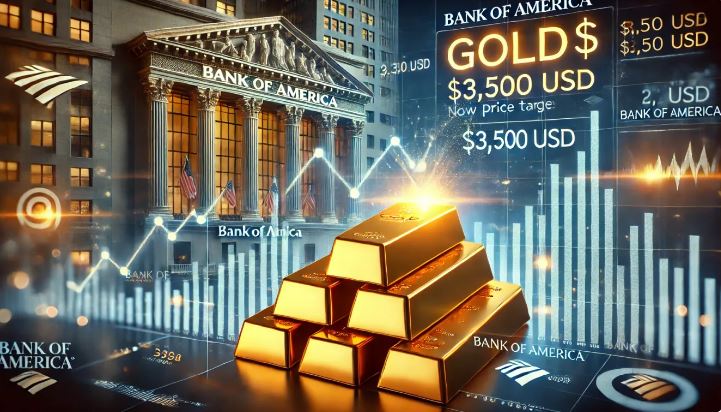On February 14, the Bank of America (BofA) continued to maintain its forecast of world gold prices reaching 3,000 USD/ounce in the near future, but admitted that this could be just a milestone in a stronger price increase.
As of 6:00 a.m. on February 16, the world gold price listed on Kitco was at 2,882.4 USD/ounce, up about 11% since the beginning of the year. According to Michael Widmer, commodity strategist at BofA, the main driver behind this increase is the fact that central banks around the world are stepping up gold purchases to cope with economic and geopolitical uncertainties.
Factors such as the US budget deficit, trade disputes, war, sanctions and the risk of international asset freezes have boosted the flow of money into the precious metal.
One of the key factors that could continue to push gold prices higher is China. The Chinese government has recently launched a pilot program allowing the country's insurance companies to invest up to 1% of their assets in gold.
According to BofA's estimate, if Chinese insurance companies take advantage of the 1% ceiling, the capital poured into gold could reach about 180-200 billion yuan (equivalent to 25-28 billion USD). This could create demand for an additional 300 tons of gold, accounting for about 6.5% of the total annual physical market demand. This is an important step in maintaining gold's long-term upward momentum.

Not only China, the US gold market is also witnessing significant fluctuations. Widmer said that one of the factors causing the sharp increase in the price of gold futures contracts is concerns about President Donald Trump's tariff policies.
The Trump administration has threatened to impose a 25% tariff on gold imports from Canada and Mexico.Currently, the US domestic gold output only meets 17% of demand, while the rest is imported, mainly from these two countries.
To avoid risks from tariffs, investors and banks have increased gold transfers to the US, causing the price of futures on the CME (Chicago Mercantile Exchange) to increase sharply compared to the price of physical gold.
In addition to the tariff factor, Widmer also emphasized that the massive shift of gold from London to New York has disrupted the global supply chain. The London market - the world's largest physical gold exchange - is having difficulty meeting the increasing demand from investors. This has caused the cost of renting gold to increase sharply, creating more pressure on gold prices.
Major gold refineries in the world are also facing supply tensions. Normally, these factories have to pay for raw materials immediately after receiving the goods, but they only receive the money when the gold has been refined and sold on the market. As demand for gold increases sharply, they are forced to borrow more gold to maintain production, pushing up the cost of borrowing gold.
Widmer believes that if global investment demand only needs to increase by 1%, gold prices could reach $3,000/ounce. But if demand increases by 10%, gold prices could reach $3,500/ounce.
This increase is huge, but it is not impossible, Widmer said.
Currently, market sentiment is leaning towards optimism, with many investors considering gold a safe haven against global economic and political instability. If capital continues to flow into precious metals, the scenario of gold prices reaching 3,500 USD/ounce could become a reality in the coming time.











